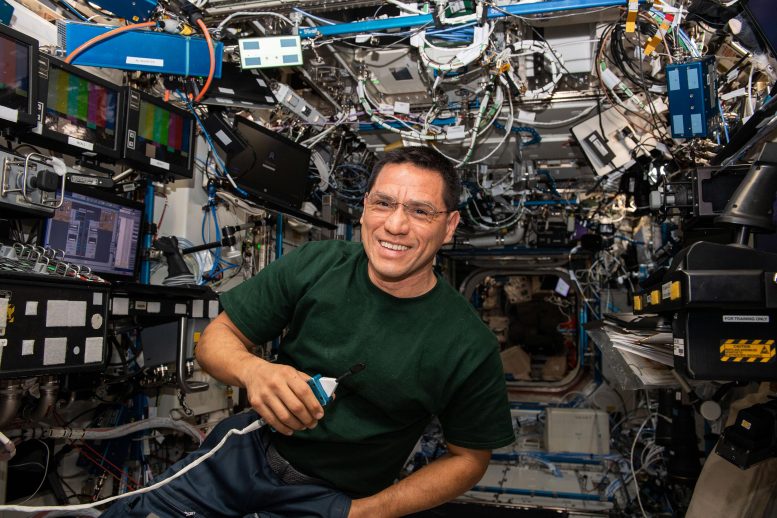
NASA astronaut and Expedition 68 Flight Engineer Frank Rubio is pictured inside the International Space Station’s U.S. Destiny laboratory module. Credit: NASA
NASA astronaut Frank Rubio is set to return to Earth this fall after setting the record for the longest single spaceflight by a U.S. astronaut. He arrived at the International Space Station (ISS) on September 21, 2022, and will return home after 371 days in space. While on the orbiting lab, Rubio and his fellow crew members conducted dozens of scientific investigations and technology demonstrations.
Here’s a recap of Frank Rubio’s year-long scientific journey aboard the space station.
In the Orbiting Biology Lab
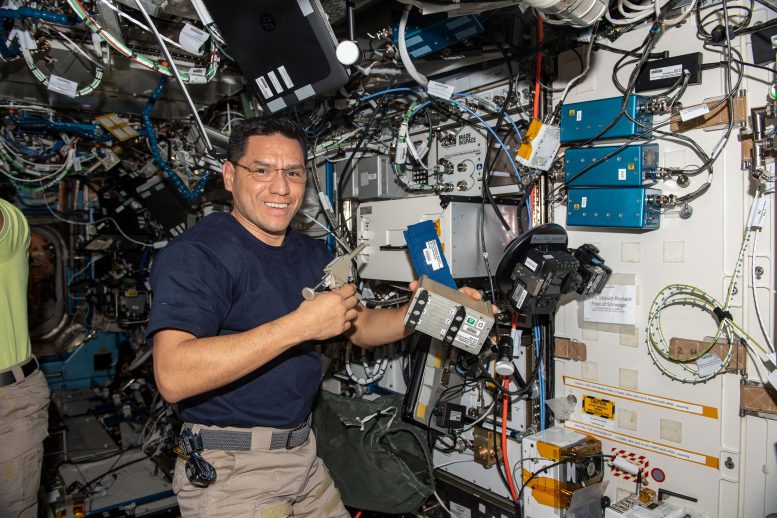
NASA astronaut and Expedition 68 Flight Engineer Frank Rubio activates hardware for a space biology experiment that is studying how weightlessness affects genetic expression in microbes to understand bacterial adaptation and protect astronauts. Credit: NASA
Frank Rubio activates hardware for the Biological Research In Canisters-26 (BRIC-26) investigation. This investigation measures how microgravity affects fundamental genetic processes and interactions in the bacteria Bacillus subtilis. A better understanding of how bacteria adapt to spaceflight could help protect the health and safety of astronauts on future missions and provide insight into bacterial adaptation to specific environments on Earth.
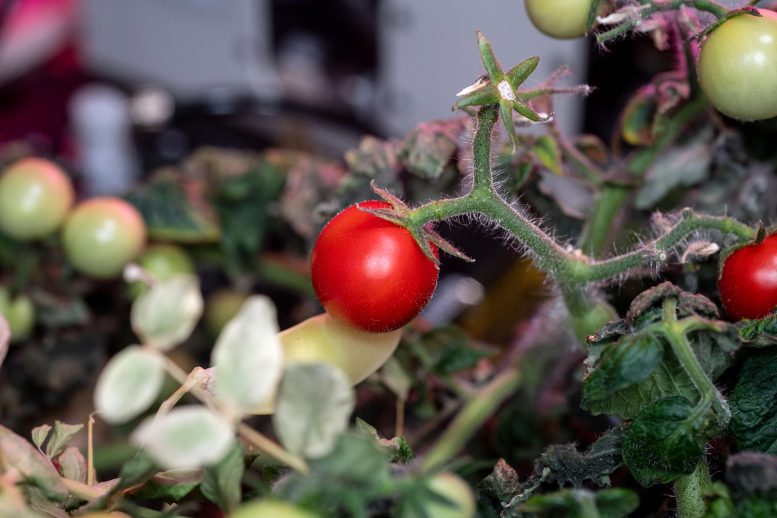
View of tomatoes growing in the eXposed Root On-Orbit Test System (XROOTS) facility. The tomatoes were grown without soil using hydroponic and aeroponic nourishing techniques to demonstrate space agricultural methods to sustain crews on long term space flights farther away from Earth where resupply missions become impossible. Credit: NASA
Throughout his mission, Frank Rubio worked on the eXposed Root On-Orbit Test System (XROOTS). The investigation uses hydroponic (water-based) and aeroponic (air-based) techniques rather than soil or other traditional growth media to complete the life cycle of tomato plants. Results could help identify ways to produce crops on a larger scale for future space missions.
The Human Element
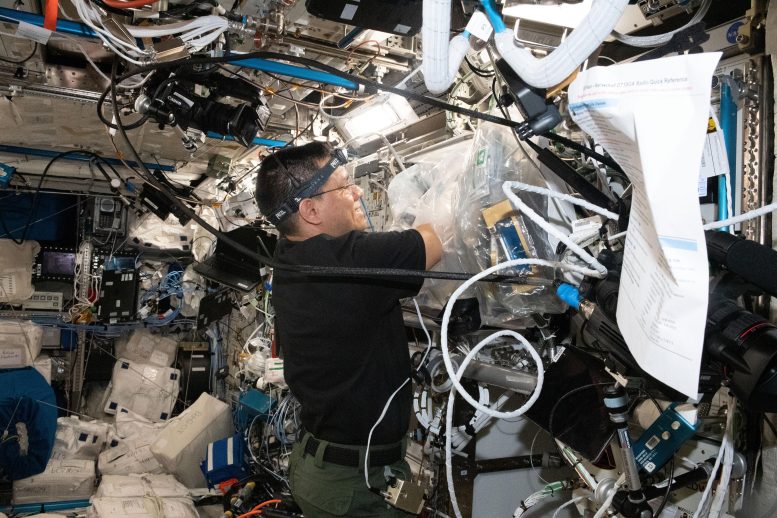
NASA astronaut and Expedition 69 Flight Engineer Frank Rubio uses a glovebag to service the BioFabrication Facility, replacing and installing components inside the research device designed to print organ-like tissues in microgravity and learn how to manufacture whole, fully-functioning human organs in space Credit: NASA
Frank Rubio replaces components inside the BioFabrication Facility (BFF). This platform supports research such as BFF-Meniscus-2, which prints and cultures meniscus, or knee cartilage tissue, with bioinks and cells. Scientists on the ground will evaluate the mechanical properties of the 3D printed meniscus upon its return to Earth. This work could advance the in-space manufacturing of complete, functional human organs for transplants.
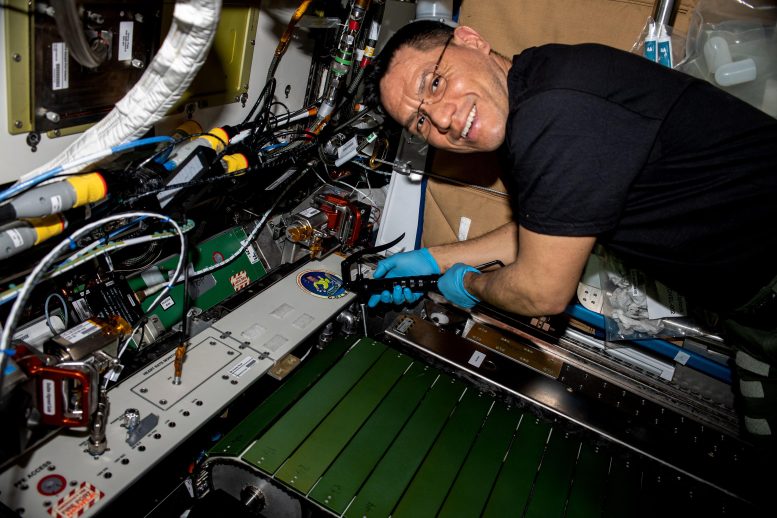
NASA astronaut and Expedition 69 Flight Engineer Frank Rubio performs maintenance on the International Space Station’s treadmill located in the Tranquility module. Credit: NASA
Exercise devices on future long-duration space missions need to be small and lightweight yet provide a variety of aerobic and resistance exercise options. Frank Rubio works on the station’s treadmill, which provides an important way to reinforce the motor pattern of walking for crew members during their missions. The station’s treadmill is too bulky and heavy for longer exploration missions, future astronauts may need to depend on other exercise to maintain physical health. Rubio participated in Exploration Exercise Treadmill Requirements (Zero T2), an investigation that examines how not exercising on a treadmill may affect crew health.
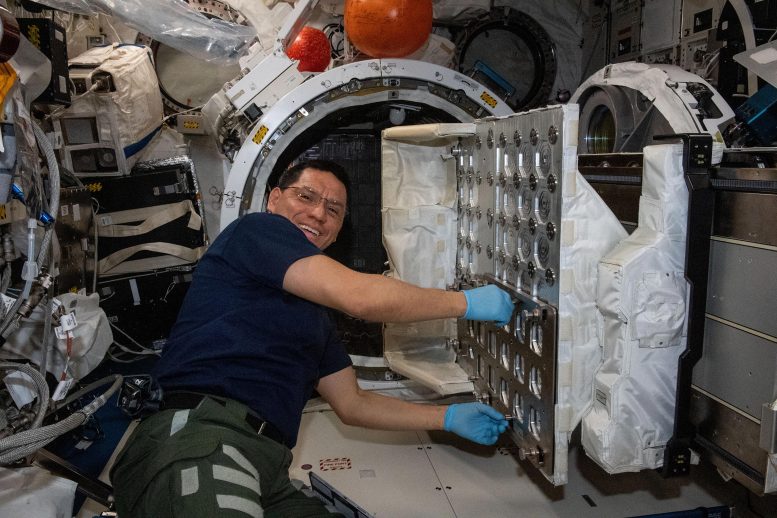
NASA astronaut and Expedition 69 Flight Engineer Frank Rubio works to install the NanoRacks CubeSat Deployer inside the Kibo laboratory module’s airlock. After the airlock is depressurized, the Japanese robotic arm grapples the deployer and places it outside in the vacuum of microgravity pointing it away from the International Space Station. CubeSats from private, governmental, and academic organizations are then deployed into Earth orbit for a variety of research objectives. Credit: NASA
During his mission, Frank Rubio helped install the NanoRacks CubeSat Deployer (NRCSD) for an April 2023 launch of six different satellites, including projects designed by students in Canada. Private, governmental, and academic organizations use the space station to deploy small satellites called CubeSats into Earth’s orbit for a variety of research objectives.
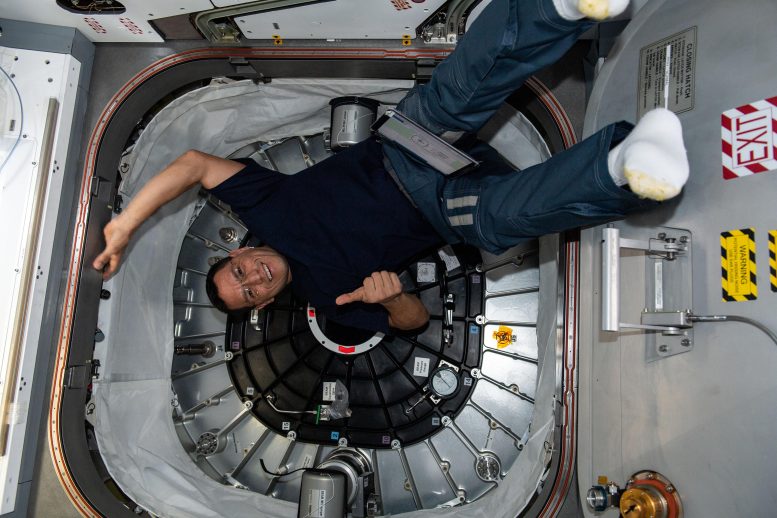
NASA astronaut and Expedition 68 Flight Engineer Frank Rubio poses in front of BEAM, the Bigelow Expandable Activity Module, during cargo activities aboard the International Space Station. Credit: NASA
Frank Rubio gives a thumbs up in front of the Bigelow Expandable Activity Module (BEAM), an expandable capsule used to test the technology for future space habitats. BEAM expands from about 6 by 8 feet when packed to 10 by 13 feet when pressurized. Crew members monitor BEAM’s temperature, pressure, and its radiation protection capabilities. They will also periodically enter the module to check on its structural condition.
Expedition 69 Flight Engineer Frank Rubio completes a Surface Avatar session in the Columbus Laboratory Module. Surface Avatar investigates how haptic controls, user interfaces and virtual reality could command and control surface-bound robots from long distances. Credit: NASA
Frank Rubio conducts a session for the Multi-Avatar and Robots Collaborating with Intuitive Interface (Surface Avatar), which evaluates the command of multiple autonomous robots from space. The investigation looks at the responses of the robot operator to haptic feedback and what challenges might exist for orbit-to-ground remote operation of robots.
The Physics of Microgravity
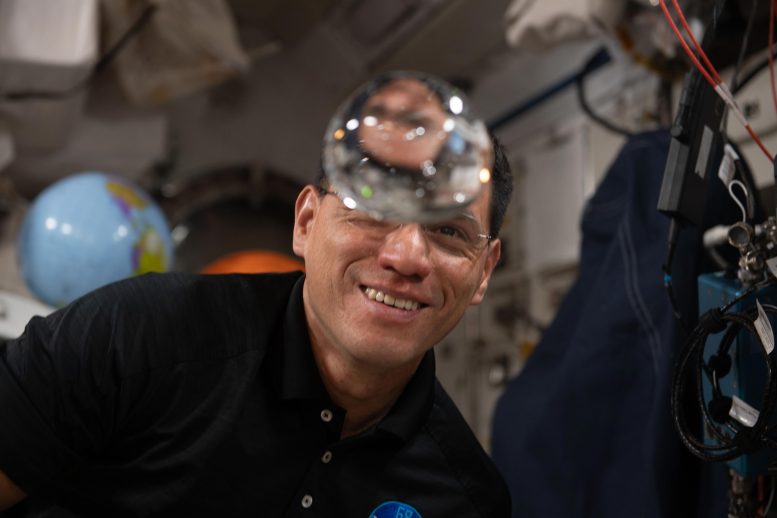
NASA astronaut and Expedition 68 Flight Engineer Frank Rubio has fun with fluid physics as he observes the behavior of a free-flying water bubble inside the International Space Station’s Kibo laboratory module. Credit: NASA
The space station is a test bed for the life support equipment needed to take humans to the Moon, Mars, and beyond. One piece of equipment, the Potable Water Dispenser (PWD), provides water for consumption and food preparation. Exploration Potable Water Dispenser (Exploration PWD) makes improvements to this system, including advanced sanitation methods and dispensing of hot water.
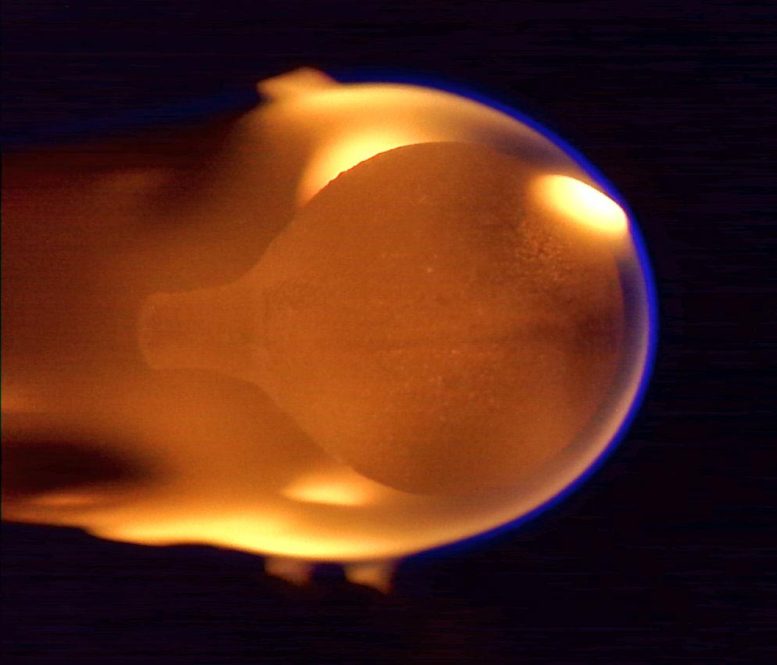
The Solid Fuel Ignition and Extinction (SoFIE) Growth and Extinction Limits (GEL) experiment successfully conducted its first test in the Combustion Integrated Rack (CIR) aboard the International Space Station (ISS) on January 13th. This image shows a 4-cm diameter sphere of acrylic burning in microgravity. The atmosphere started at 17.5% oxygen in nitrogen and air flow is from right to left at 20 cm/s. The flame appears near the end of the burn, having engulfed the entire sphere after growing from a small ignition point on the right side. Image courtesy of NASA. Credit: NASA
Frank Rubio conducted sessions for Solid Fuel Ignition and Extinction – Growth and Extinction Limit (SoFIE GEL), which studies burning in microgravity to help researchers select safer materials for spacecraft and determine optimal fire suppression techniques. This image shows a sphere of acrylic burning in microgravity during one of the tests.
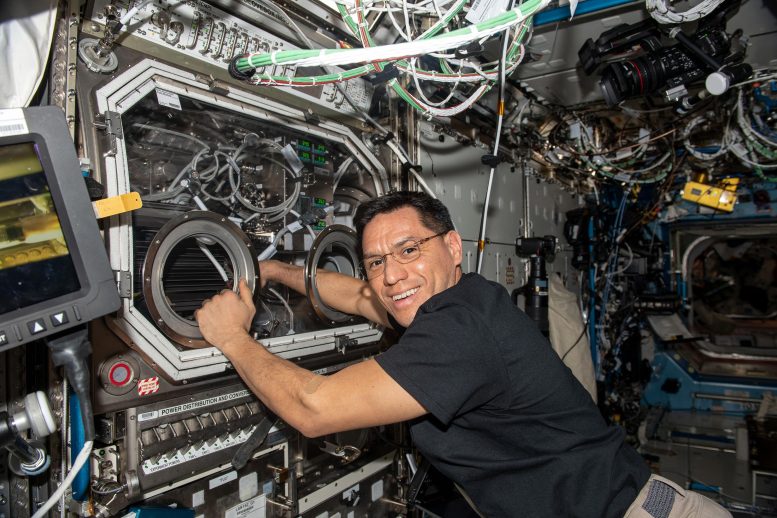
NASA astronaut and Expedition 68 Flight Engineer Frank Rubio exchanges samples inside the Microgravity Science Glovebox for the Pore Formation and Mobility Investigation. The space physics study demonstrates a passive cooling system for electronic devices in microgravity using a micro-structured surface. Credit: NASA
Frank Rubio exchanges samples inside the Microgravity Science Glovebox for the Pore Formation and Mobility Investigation (PFMI). On Earth, bubbles that form in molten materials rise to the surface and pop before the material solidifies. In microgravity, bubbles can become trapped, leaving pores or tiny holes that can reduce the finished material’s strength and structural integrity. PFMI is one of several experiments that investigate this process.
A Walk in Space
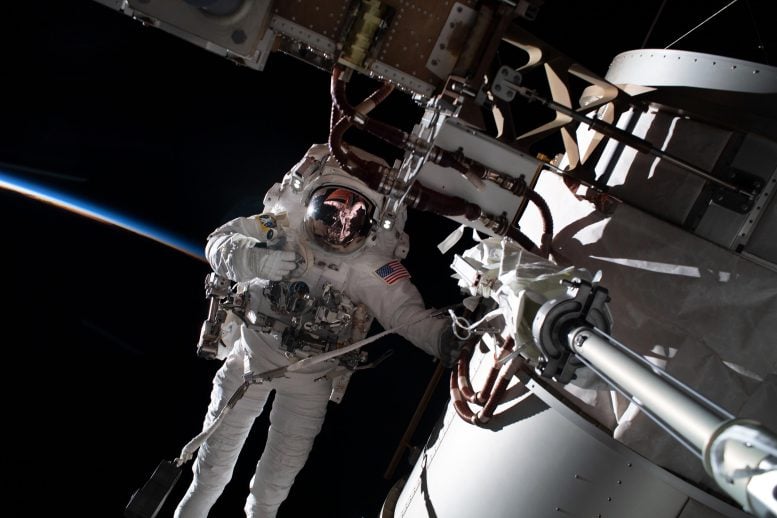
NASA astronaut and Expedition 68 Flight Engineer Frank Rubio is pictured during a spacewalk tethered to the International Space Station’s starboard truss structure. Behind Rubio, the last rays of an orbital sunset penetrate Earth’s thin atmosphere as the space station flew 258 miles above the African nation of Algeria. Credit: NASA
On this November 15, 2022, spacewalk, Frank Rubio and NASA astronaut Josh Cassada assemble a mounting bracket on the station in preparation for the installation of the first pair of rollout solar arrays, known as iROSAs. It took six spacewalks, the final one in June 2023, to install all the arrays, which are expected to enable a 30% increase in the power available for science and operations on the space station. The earlier Roll-Out Solar Array (ROSA) investigation proved the viability of this technology.
Aboard the International Space Station, Expedition 69 Flight Engineer Frank Rubio of NASA answered questions about life and work on the orbiting laboratory during an in-flight conversation on September 13 with NASA Administrator Bill Nelson. Credit: NASA

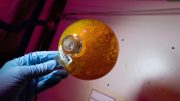

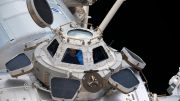

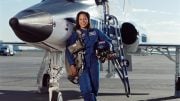

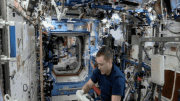
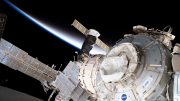
Be the first to comment on "NASA’s Record-Breaking Astronaut: Scientific Highlights of Frank Rubio’s Year in Space"